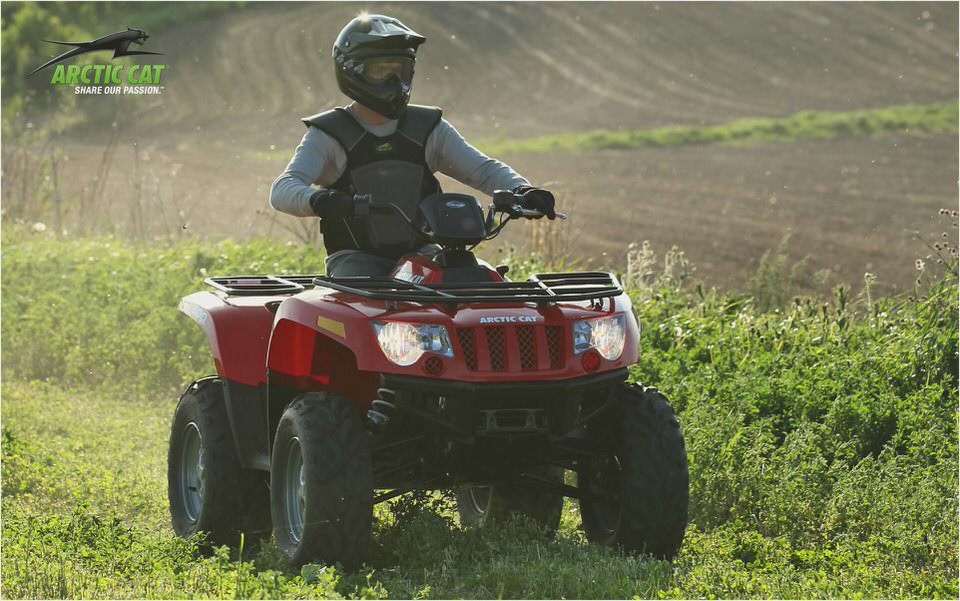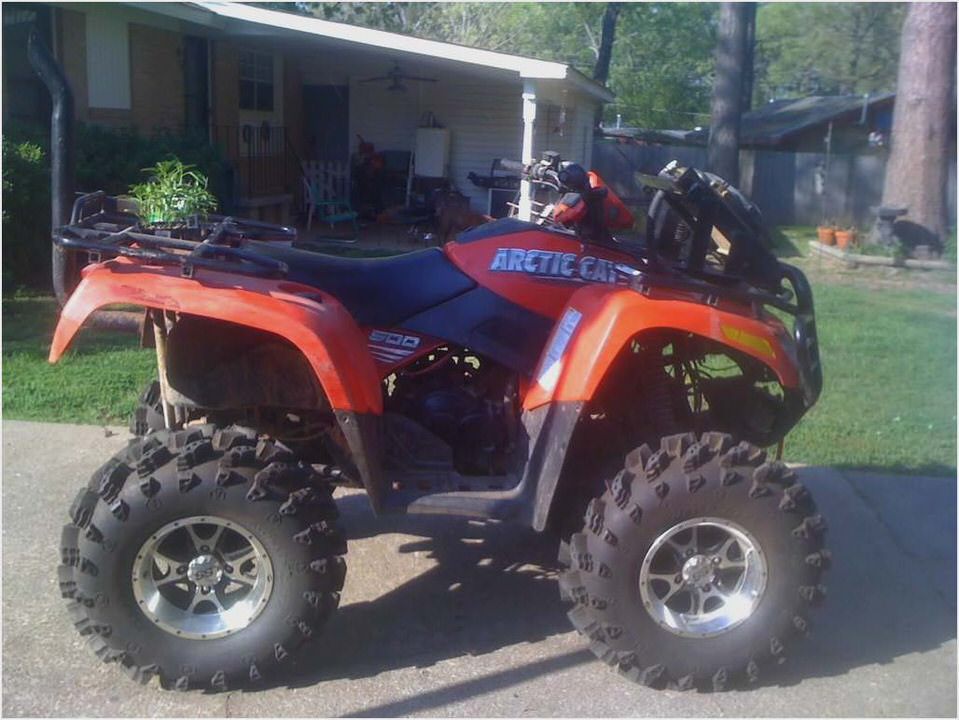
#7 Arctic Cat 500 4×4
We’ve had a couple of other experiences with Arctic Cat ATVs in multiquad comparisons, and they always seem to be the odd man out. As machines that are designed to work–in demanding conditions–first and trail ride second, Cats feature a number of positive design characteristics that make them a less fun trail machine. Many of the peccadilloes can be traced to a simple statistic: The full-sized Arctic Cat (400 and 500) chassis has a whopping 12 inches of ground clearance and 10 inches of wheel travel at all ends.
For your typical Cat buyer, this translates to getting anywhere without the need for winch or tow rope. Yet this astounding amount of travel has its drawbacks.
The first is height and the accompanying high center of gravity. A tall vehicle riding on long suspension will want to do funny things in corners taken at speed, and this one is no exception. Arctic Cat realized this and, to counteract this tendency, built in a wide track for better cornering stability.
This caused other problems. The Arctic Cat 500 and Bombardier Quest were the champions at picking up trailside attractions. Following the ruts of others was a recipe for a quick trip to the roll-over hotel; more than any other quad here, tagging a wayward root or stone with the Cat’s tire’s sidewall pulled the steering in the direction of the obstacle and perpendicular to the direction of travel.
The Bombardier, on the other hand, deflected away from the hit–and in a far less dramatic fashion.
Why the big pull, you ask? One of the workaday features built into this quad is nonprogressive steering. In other words, the amount you turn the bar is how much wheel movement you get, without any gain toward the edges of steering lock. This is a feature much appreciated in a work machine, as predictable steering is an important issue to those using a quad for work.

In a recreational trail-riding setting, this reduced leverage over the front end makes for increased leverage of the front end over you. Several testers complained of having the bar ripped out of their hands on the 500 on our first day of riding in the South Carolina woods. The ruts on the Big Buck GNCC course, coupled with a plethora of tree roots and rocks, made for slow going on the wide machine.
The remaining days of the comparison found the 500 4×4 in slightly friendlier country. While still full of roots and rocks, the trails in the North Carolina Smokies are less rutted and wider, allowing the pilot to pick his own flight path. Even in this environment, to keep up with the crowd meant a lot for work for the Cat rider, pushing the heavy-steering mount away from obstacles that might upset it or over others and muscling it through turns while its fellows just slide by.
Unlike its peers, the Cat is not a machine you can just hop on from another and make small nuance adjustments in your riding. You have to start with a clean sheet of paper to truly appreciate its core competencies: If your winchless buddies get to a deep mud hole (not much of that in these mountains), they’ll be waiting around for you to get there to tow them out.
Perhaps the most important strategy with the Arctic Cat is to pick different lines through tricky trail sections. If there’s a rock, root or stump on one side that everyone’s been avoiding, aim at it and climb right over it. On tricky trails and cross country excursions, the 500 is almost untouchable. at the right pace.
Pure work use aside, if you’re a wanderer, an explorer, a camper but not a racer, this could be your quad. We never seem to get that type as testers.
- Insight: an 2000 arctic cat four wheeler, 300 size..adjustment..valves…
- ATV Source – Manufacturers – Arctic Cat – 2009 – 400/550 H1 TRV Plus
- Wr 250 carburetor adjustmentWood Tray
- Arctic Cat 2000 300 4×4 Owners Guide Books
- 2011 Arctic Cat Sno Pro 500

